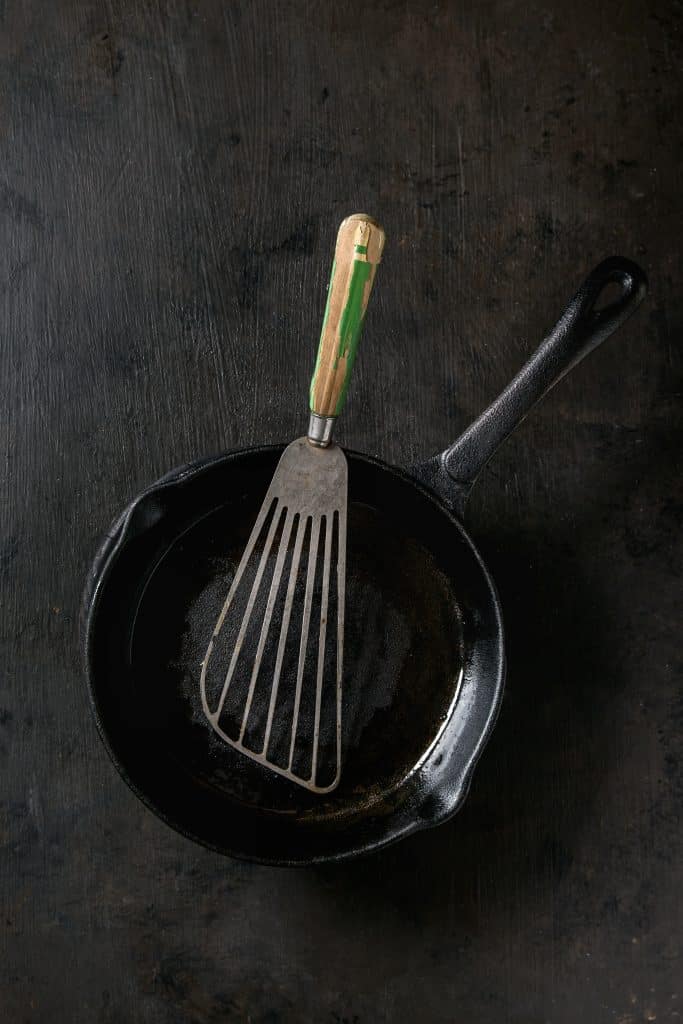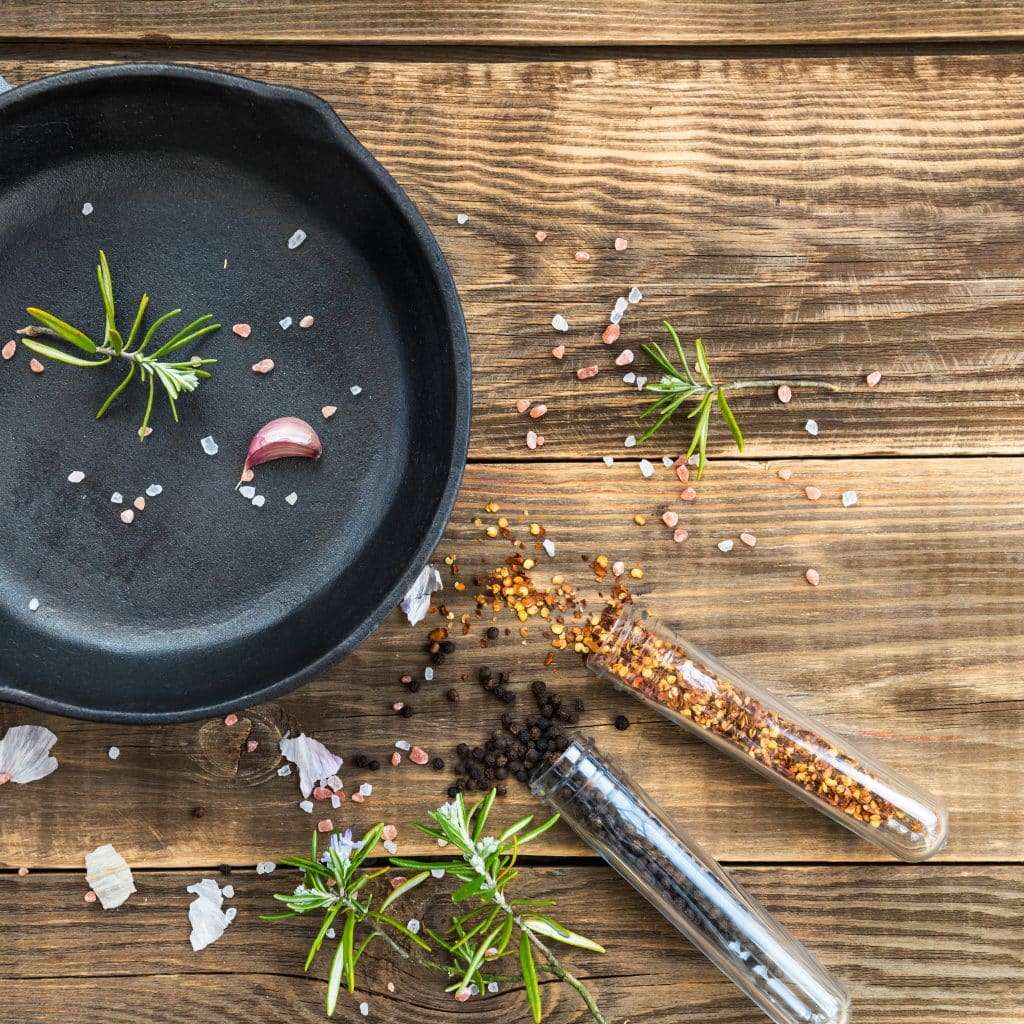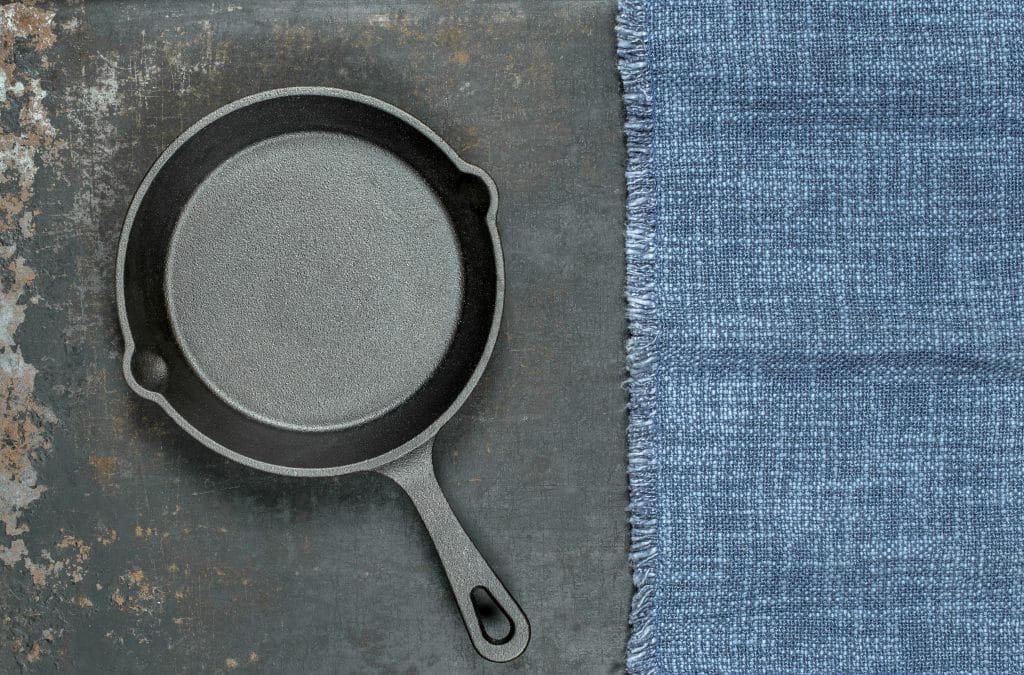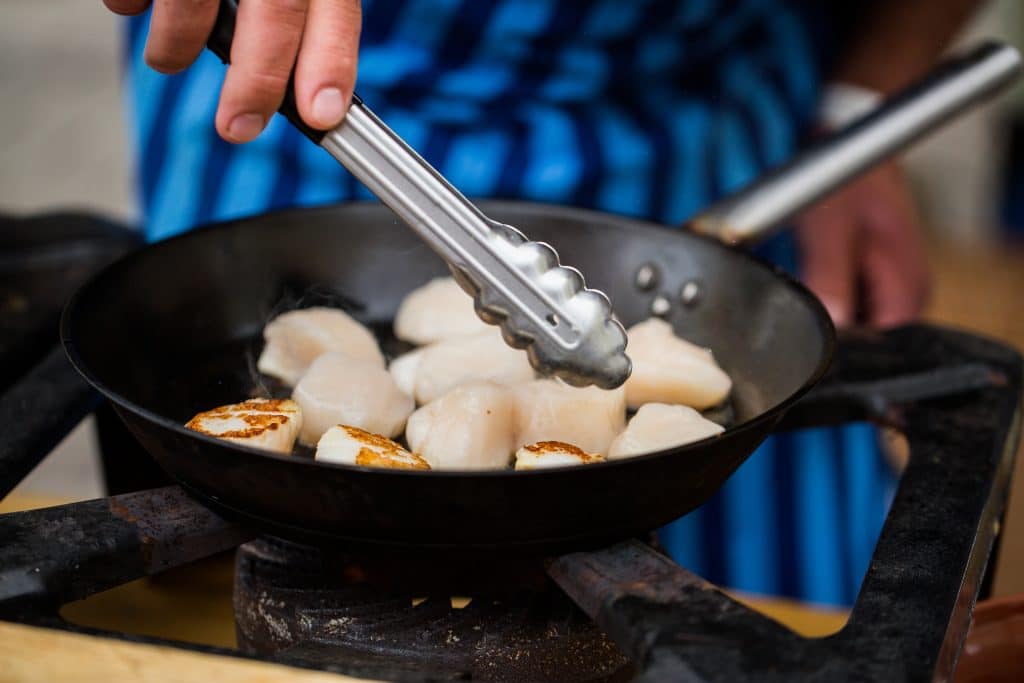Are you the proud owner of a cast-iron skillet but don’t know how to properly care for and maintain it? Clearing up any misnomers and outdated myths surrounding cleaning cast-iron skillets, this article will show you how easy cleaning your prized pan can be – think of it as an opportunity to get creative in the kitchen and come away with sparklingly clean cookware. So grab your trusty pot scrubber (and maybe an apron), and start learning how to give your beloved friend some much-needed TLC here.
Contents
Why Use A Cast-Iron Skillet?

Cast-iron skillets are a classic kitchen tool used for centuries in cooking and baking. Cast-iron skillets have some distinct advantages that make them stand out compared to traditional skillets – they heat up evenly, accurately retain heat, are extremely durable and low maintenance, and can also be used on a charcoal or open flame.
Cast-iron skillets are an excellent choice because they require very little oil while producing fantastic flavors due to the even heating quality. They can also be seasoned so that food comes out with incredibly intense flavor each time it is used. For most cooks, cast-iron skillets remain the preferred choice for their quality construction and consistent results.
Materials Needed

Cleaning and caring for a cast-iron skillet is important to keep it in good working condition. It’s essential to use the proper cleaning materials, as some cleaning products can damage the surface of your cast-iron skillet. Ensure you have a scrubbing brush, hot water, dish soap, and cloth before cleaning. Anything more abrasive such as steel wool, should be avoided when cleaning your cast-iron skillet. When done properly with the right materials, you’ll ensure that your skillet remains top quality for years. You may also want to have some salt and vegetable oil on hand, as explained later in the article.
Cleaning Process

- Step 1: Prepare the skillet for cleaning
The first step in cleaning your cast-iron skillet is to let it cool down after cooking. If you try to clean a hot skillet, you could burn yourself, so it’s essential to let it cool for a few minutes before cleaning. Once the skillet has cooled down, remove any excess oil or food debris by wiping it with a paper towel or clean cloth.
- Step 2: Wash the skillet with dish soap and water
Contrary to popular belief, it is entirely acceptable to use dish soap to clean a cast-iron skillet. However, you should use mild dish soap and avoid harsh chemicals or abrasives that can damage the skillet’s seasoning. To wash your skillet, fill it with warm water and add a small amount of dish soap. You can then use a scrub brush to remove any stubborn food particles.
- Step 3: Rinse the skillet thoroughly with water
Once you have finished scrubbing your skillet, you should rinse it thoroughly with water. Remove all the soap and food debris from the skillet, as any leftover soap can affect the skillet’s seasoning.
- Step 4: Dry the skillet
It’s crucial to dry your skillet completely to prevent rust from forming. After rinsing your skillet, dry it thoroughly with a clean towel or paper towel. If you don’t have a towel or paper towel, put your skillet on a stove burner on low heat for a few minutes to evaporate any remaining moisture.
- Step 5: Apply a light coat of oil
The final step in cleaning your cast-iron skillet is to apply a light coat of oil to protect it from rusting and ensure it stays well-seasoned. You can use vegetable oil, such as canola or soybean oil, and apply it with a clean paper towel or cloth. Make sure to rub the oil in thoroughly, and then store your skillet in a dry place.
Tips for Maintaining a Cast-Iron Skillet

Maintaining a cast-iron skillet is relatively simple, and there are a few tips you can follow to keep your skillet in excellent condition:
Preventing Food From Sticking
One of the most significant benefits of using a cast-iron skillet is that it can create a natural non-stick surface over time. However, this can take some time to develop, and in the meantime, food may stick to the skillet. You can preheat your skillet before adding any ingredients to prevent food from sticking. You can also use some oil or butter to create a non-stick surface. Another option is to sprinkle some salt into the skillet before cooking, which can help prevent sticking.
Seasoning Your Skillet
Seasoning your cast-iron skillet is the process of adding a layer of oil to the surface to create a non-stick surface and protect the skillet from rust. To season your skillet, apply a thin layer of vegetable oil to its surface and heat it in the oven for an hour at 375°F. This process will create a layer of polymerized oil on the skillet’s surface, making it non-stick and preventing rusting. You should season your skillet periodically, especially if it’s starting to stick or rust.
Storing Your Skillet
Proper storage is essential to keep your cast-iron skillet in good condition. After cleaning and seasoning your skillet, store it in a dry place, away from moisture or humidity. If you stack your skillets, place a paper towel or cloth between them to prevent any moisture from being trapped. You should also avoid storing your skillet with the lid on, as this can trap moisture and cause rust to form.
Avoiding Common Mistakes

People make a few common mistakes when cleaning their cast-iron skillet that can damage the skillet’s seasoning or even cause it to rust. One of the most significant mistakes is leaving the skillet soaking in water for an extended period. This can cause rust to form and damage the skillet’s seasoning.
Another mistake is using harsh chemicals or abrasives to clean the skillet, which can damage the seasoning and make the skillet more prone to rusting. Finally, you should never put your cast-iron skillet in the dishwasher, as the high heat and harsh detergents can damage the seasoning.
Clean Your Cast-Iron Skillet Easily And Effectively With This Guide!
Cleaning and maintaining a cast-iron skillet is essential to keep it in excellent condition and ensure it lasts generations. By following the step-by-step cleaning process outlined in this article and implementing some of the tips provided for maintaining your skillet, you can ensure that your cast-iron skillet stays in excellent condition and continues to provide delicious, evenly cooked meals for years to come. Remember to avoid common mistakes, such as using harsh chemicals or leaving your skillet soaking in water, and always store your skillet in a dry place. With proper care and maintenance, your cast-iron skillet can become a treasured family heirloom that you can pass down for generations.



